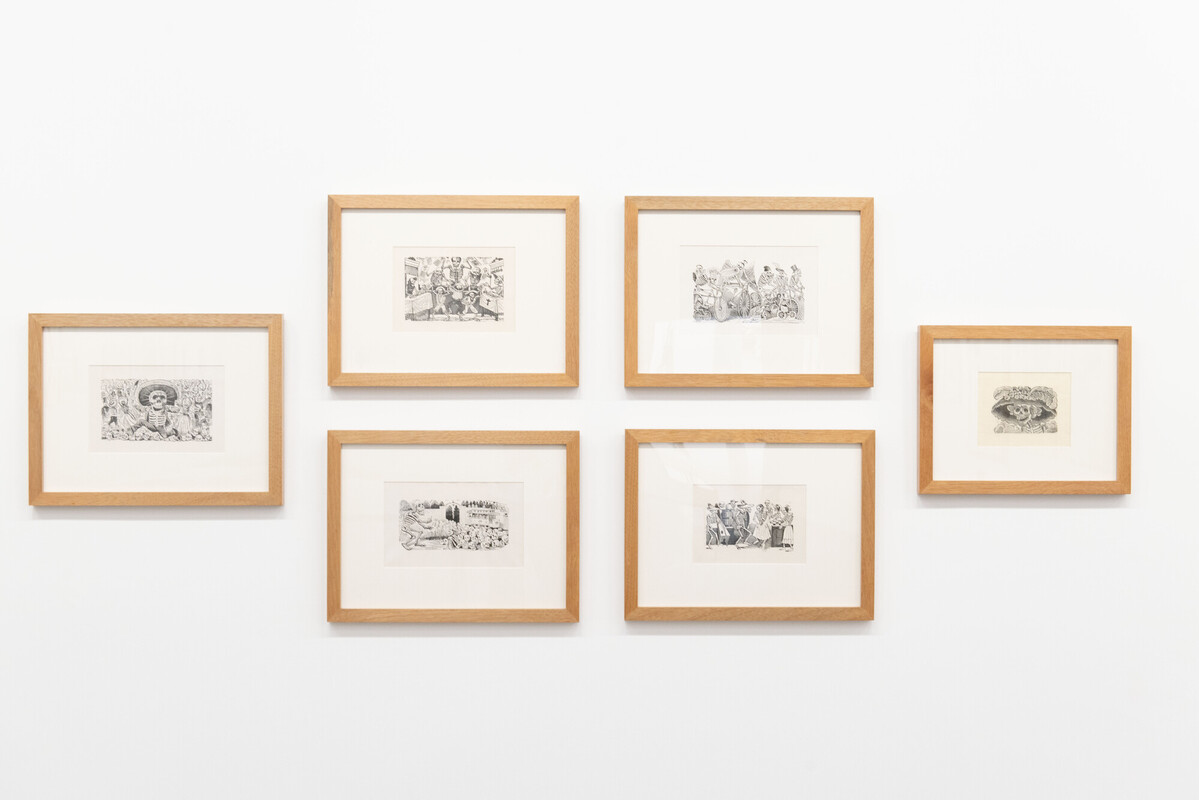
José Guadalupe Posada
Playing with death, be it tag, hide-and-seek or, for the more cerebral, a game of chess. Just to kill time, our gravedigger. But not forgetting the materials needed to eternalize the encounter: stone, paper, scissors, pencils, inks, chisel… In the case of José Guadalupe Posada (1852–1913), lithography was chosen, because only then could his engravings become viral in prints, reprints, and reappropriations that are repeated before the eyes of the living. A choral memento mori – works echoing in Latin the litany of “remember that you too will die.”.
Posada belongs to that small group of artists whose works are automatically recognizable, even if you don’t know who they were authored by. His celebrated calaveras [skeletons] draw energy from the cheap pages for which they were intended and are part of Mexico’s living-dead history. The Gran calavera eléctrica (1907), La calavera oaxaqueña (1900), La calavera revolucionaria (c. 1910) and, above all, La calavera Catrina (1910/1913) are memento mori memes that predate the world wide web. At once a joke and a philosophical reflection, a celebration of death and cultural resistance to colonization. Interested in producing in the tradition of what has come to be called popular art – a questionable and ambiguous category – Posada’s reach extended to the illiterate (the majority of the population at the time) and increased throughout the 20th century in the context of an appreciation for Indigenous, pre-Columbian, and contemporary cultures.
He produced caricatures and illustrations for several newspapers in circulation during the tumultuous late 19th century until 1913, when he died in anonymity. He was published in many pro- working class newspapers, but his affiliation with revolutionary ideals is not settled. However, there remains one undeniable constant in his satirical verve: ridiculing the bourgeoisie that feeds off the exploitation of the people. This fact is present in the lines that go from the costumbrista phase to his late production, culminating in the hat on the skeleton of the socialite Catrina.
igor de albuquerque
translated from Portuguese by philip somervell
José Guadalupe Posada (Aguascalientes, Mexico, 1852 – Mexico City, Mexico, 1913) was a painter and caricaturist, famous for his lithographs of death scenes, popular engravings, and social caricatures inspired by folk art. He did print and advertising work, illustrated books and printed posters, made portraits of historical figures and religious images. Political caricature was his passion. He recorded extraordinary events and everyday life, to which he added humorous notes. Posada’s work focused mainly on the working class, highlighting the inequalities and suffering of the people through satire and humor. His illustrations criticized the excesses of the political classes and portrayed the lifestyle of the Mexican worker.

 Português
Português